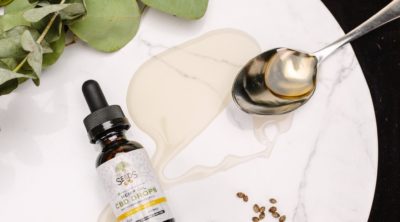
This article lists some home remedies that you can follow to manage fungal ear infection. It also gives you information on what causes such infections, and what are its symptoms.
Otomycosis or fungal ear infection results in an inflammation of the outer ear and ear canal. It usually affects the ear lining causing pain and itchiness in the particular area. There are different ear fungus that may affect human ears such as Aspergillus fumigates, Aspergillus niger, Candida albicans and Candida tropicalis.
What Triggers Fungal Infection in the Ear?
- Moisture in the ears due to swimming, perspiration or high humidity.
- Water contaminated with bacteria.
- High environmental temperatures.
- Insertion of foreign objects such as cotton swabs, ear plugs, fingernails or hearing aids.
- Chronic dermatological diseases such as eczema, psoriasis or acne.
- Trauma to the ear canal.
What Indicates Otomycosis?
In addition to inflammation and pain, fungal ear infections can be identified by observing certain signs exhibited. The intensity of the symptoms can indicate the severity of the condition. The symptoms include:
- Inflammation
- Scaly, dry skin
- Pruritus or an itching sensation
- Severe discomfort
- Visible masses of debris containing the fungal hyphae. (The fungal hyphae are protruding filaments which allow the fungal infection to grow)
- Production and secretion of pus
- Pain and discomfort
- Tinnitus (ringing of the ear)
- Hearing loss and impairment
Home Remedies
- Mix small quantities of white vinegar, hydrogen peroxide, and rubbing alcohol with warm water and pour into the ear. Hold this for a minute in the ear and drain out to clean the ear.
- Warm olive oil applied to the ears once in two months helps prevent the buildup of excess wax which might result in blockage of the ear and ear fungus.
- You can also add some garlic to olive oil and keep it for a few hours. Heat this solution till it gets lukewarm and then dip a small cotton ball in the solution. Place the wet part in the ears.
- You can use a hair dryer to dry the moisture from your ears after swimming or a head bath.
- Heat a cup of salt in the microwave for about two minutes. Empty the contents into a clean, cotton sock and tie it up. Apply this warm salt compress to the infected ear. This will not only soothe the pain, but reduces fluid, swelling and pressure in the ear.
- Mix equal amount of vinegar and water in a small bowl. With the help of a dropper, put a few drops into the affected ear. This solution clears the fungal infection and the symptoms caused due to it.
- Garlic oil works in an effective way when it comes to curing the pain and discomfort, normally observed in ear infections. Puncture a garlic oil capsule and empty its contents into the infected ear. Tilt your head so that the oil does not flow out. Remain in this position for about 10 minutes before tipping it out completely.
Medical Treatment
Once an accurate diagnosis of a fungal ear infection is made the debris causing the blockage has to be removed by aspirating it out. An ENT specialist may use an otoscope to make sure the debris is completely removed from the ear canal before treating it with topical antifungal medication. In addition to this there are many home remedies for ear infections which you can use to effectively treat ear fungus including a preparatory ear cleanse which also includes ear candling.
People at Risk
It is observed that fungal ear infections affect people with weakened immune systems such as those who are HIV-positive or have a history of respiratory disorders. The Aspergillosis fungi can be particularly threatening in people who are already ill. Also people living in places with dusty environment with high humidity and heat are especially prone to fungal infections in the ears.
It is important that you do not flush out your ears to remove the debris as it may only aggravate the fungal infection by adding moisture to the ears. You need to keep in mind that symptoms of a fungal ear infection are usually similar to a bacterial ear infection. The ear promotes a delicate environment where both bacteria and fungus thrive. If antibiotics are administered in the absence of a bacterial infection, the good bacteria are killed, allowing the fungus to thrive. The best course of action is to visit an ear specialist to receive an accurate diagnosis and treatment.
Disclaimer: The information provided in this article is solely for educating the reader. It is not intended to be a substitute for the advice of a medical expert.


